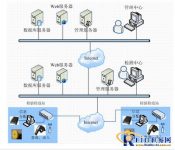
Animal husbandry breeding traceability management system
[ad_1]
introduction
In recent years, food-borne public health crises caused by livestock and poultry (such as cattle, pigs, chickens) and other animals have frequently occurred worldwide, posing a serious threat to human health and public safety. Animal health and epidemic prevention issues have become the focus of attention of governments, food companies and consumers in various countries. Countries are striving to establish animal identification and traceability management systems as one of the important measures to regulate livestock and poultry breeding behavior, effectively prevent and control major livestock and poultry diseases, improve the level of livestock and poultry health supervision, and ensure the quality and safety of livestock and poultry products.
In December 2006, the General Administration of Quality Supervision, Inspection and Quarantine of the People’s Republic of China and the National Standardization Administration of the People’s Republic of China issued aRFIDThe technical “Animal Radio Frequency Identification Code Structure” (GB/T20563-2006) standardizes the breeding identification and traceability system of livestock and poultry, and it will be implemented on December 1, 2006.
Animal identification and traceability system refers to the identification of individual animals or groups, the registration of related places such as breeding, slaughter and processing, and related information on animal breeding, transportation, slaughter, and processing, storage, transportation, and sales of animal products. Recording, so that when an epidemic occurs or a quality and safety incident occurs, the possible problems in animal breeding and animal product production, processing, sales and other links can be effectively tracked and traced, and resolved in a timely manner.
System composition block diagram

Features
The animal husbandry traceability management system is divided into a three-level system, management center→test center→inspection and quarantine station. The system is mainly composed of electronic ear tags, fixed readers, handheld readers, card issuers, PC terminals and servers.
1. Inspection and Quarantine Station
Establish an inspection and quarantine station in each livestock farm. The inspection and quarantine station can establish different system database servers according to the size of the livestock farm, which can complete the distribution of animal electronic tags, the entry of animal data, the entry of inspection and quarantine data, and the reporting of diseases, etc. Features. The system database server of the inspection and quarantine station is connected with the database server of the inspection center to upload database information in real time.
2. Testing Center
The testing center is responsible for receiving various data information (such as: animal birth, feed feeding, disease status, growth status, etc.) transmitted by the subordinate inspection and quarantine station. The testing center classifies, screens and comprehensively analyzes the data, and has farm ID allocation, Animal electronic tag distribution, data storage, display, recording, printing, statistical functions, and realize networking with the health bureau and management center of the region.
The inspection center saves the information of all animals in the inspection and quarantine stations under its jurisdiction. The data of each inspection and quarantine station is transmitted to the inspection center in real time, and the inspection center regularly transmits the analyzed data to the management center.
3. Management Center
The management center is composed of relevant departments of the Ministry of Health. It is the decision-making center of the traceability system. It analyzes and investigates the detection information obtained from the detection center, makes management decisions in time, and achieves early detection, early prediction, and early treatment of animal disease epidemics. , And at the same time strengthen the management of animals from birth to slaughter.
System Features
1. High degree of informationization: Due to the RFID technology adopted, new technologies have been realized from information collection to transmission and processing, allowing inspection and quarantine personnel to quickly obtain animal growth, disease, and quarantine status.
2. Efficient traceability: The system tracks the entire life cycle of the animal, records each link in detail, and uploads the data to the detection center and management center in real time. If an epidemic occurs, the system will automatically monitor the epidemic The source is traced back to achieve a rapid response to the epidemic.
3. Convenience: The centralized management of all-electronic data in the system enables the search for a large amount of data to be completed by the server, saving a lot of manpower and time, and speeding up the response to events.
4. Improve management level: centralized management, distributed control; standardize the supervision and management of the epidemic, reduce unnecessary links, so that emergencies can be dealt with in time.
[ad_2]



